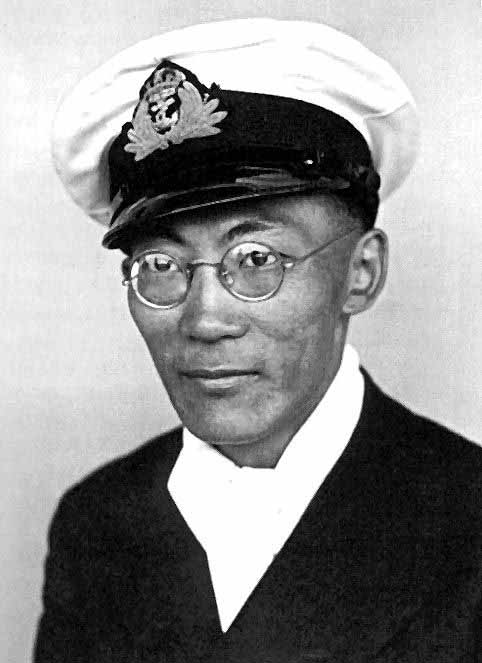Chinese Canadian sailor liberated POWs in Hong Kong
July 18, 2023 - Royal Canadian Navy

Caption
William Lore. Photo: Chinese Canadian Military Museum Society.

Caption
A group of Canadian prisoners of war at the infamous Sham Shui Po Prisoner of War Camp, which was liberated by LCdr Lore and a group of Royal Marines.
Chinese Canadian William Lore wanted to serve his country during the Second World War. But all three of his applications were rejected due to his heritage.
“I think they just saw on my application ‘Chinese’ and threw it in the waste basket,” Lore would later remember during an interview.
At the onset of the War, the Canadian government introduced restrictive immigration policies. The Chinese Immigration Act of 1923 barred nearly all immigration of Chinese immigrants into Canada, with those restrictions extending to military recruiting throughout the Commonwealth.
In 1943, an Order in Council removed racial restrictions to Canadian Armed Forces (CAF) recruits. Applying again, Lore was finally admitted, becoming the first Chinese Canadian officer in the Royal Canadian Navy (RCN).
Lore completed naval training and was posted to Ottawa at the newly formed Combined Services Radio Intelligence Unit.
In 1944, he was loaned to the Royal Navy (RN) where his character, skill set, and multilingualism set him apart.
After reading and interpreting “two lines of a Chinese epigram on screen,” he was selected to be part of a two-man team in the Combined Services Detailed Intelligence Corps in Burma (present-day Myanmar).
In January 1945, he was sent to Colombo, Ceylon (present-day Sri Lanka), where he travelled deep into the jungle to a top secret RN transit camp, where he played an instrumental role in the development of a large, joint amphibious and air attack on Japanese forces in Rangoon, Burma (present-day Myanmar).
The plan saw British and Anglo-Indian forces successfully liberate the city, contending with limited Japanese opposition, mostly snipers. By May of 1945, the enemy had been fully expelled.
After the Japanese government began to negotiate terms to surrender Lore led a party of British Royal Marines to negotiate an official surrender with the Japanese in Hong Kong.
They took control of the RN shore base and liberated Canadian, British and Hong Kong prisoners being held at the notorious Sham Shui Po POW camp.
The still-posted Japanese guards first laughed at Lore, but his persuasive attitude and the accompanying Marines convinced the guards of Japan’s surrender.
Lore’s account of discovering the Canadian POWs is harrowing.
“I went into the first building I came to and it was very dark,” he said. “There were about 40 men in there, Canadians, sitting at tables and so forth. I said, ‘Hi you guys, don’t you want to see a Canadian?’ Then they ran forward and saw my cap badge. Those men were really skeletons. You could see their bones through the skin.”
“Then they were crying and weren’t ashamed of crying. And finally I cried, too, because they were telling me what they had suffered,” remembered Lore.
Despite the war’s end, Lore stayed on loan to the RN before returning to Canada a year later.
Lore served in Hong Kong again during the Korean war doing intelligence work. He settled in Hong Kong in 1957 and became an insurance agent. Then, at the age of 51, Lore earned a law degree at Oxford University and opened his practice in 1962.
He died on September 22, 2012 at 103 years of age.
“William Lore’s drive and determination to serve his country and to achieve recognition of Chinese Canadians as full members of Canadian society serve as a wonderful example to all of us and show that we all can make a difference. As a sailor, Lieutenant-Commander Lore made Canada proud,” said Peter MacKay, the Minister of National Defence at the time of Lore’s passing.